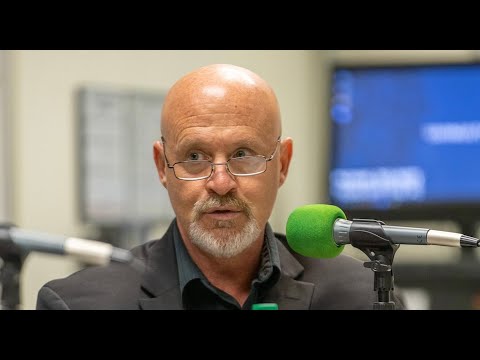Anti-racism advocates are calling on employers and governments around the country to work together against institutional racism.
The Diversity Council of Australia and the University of Technology Sydney’s Jumbunna Institute for Indigenous Education and Research joined forces to release the Gari Yala report on Tuesday.
It is named after the Wiradjuri phrase meaning ‘speak the truth’ and that’s exactly what the report’s creators hope it will do.
The research involved surveying 1,033 Aboriginal and Torres Strait Islander people from around the country about their experiences in the workplace and the results were stark. All participants were anonymous.
Thirty-eight per cent reported being treated unfairly because of their Indigenous background “sometimes, often, or all the time”, 44 per cent reported hearing racial slurs in the workplace, and 59 per cent said they had encountered “appearance racism” – receiving comments about the way they look or ‘should’ look as an Indigenous person.
Twenty-eight per cent of respondents said they worked in “culturally unsafe workplaces”.
NITV: 10 times Indigenous Australians have experienced ‘everyday’ racism
Eora descendant and UTS professor Nareen Young, who led the research, has spent her career working as a diversity employment practitioner and said she was unfortunately not surprised by the results.
“I’ve been talking to Aboriginal and Torres Strait Islander people about work for a really long time, so this is what I expected. It just seems to me that the anti-racism at work message just hasn’t got through, despite so many years of the Racial Discrimination Act,” she told SBS News.
“These legislative frameworks have been in place for a long time, the message is that you can’t be racist at your workplace, but still that doesn’t seem to have got through. And that is distressing, really distressing.”
(Watch some of the anonymous survey responses being read aloud in the video below. Article continues afterwards.)
“Nobody wants to hear ‘you’re too pretty for an Aboriginal’ or ‘you don’t look Aboriginal’ or ‘you haven’t got the nose’ or ‘you must be only a very small percentage’ … those things,” Professor Young said.
“They’re really, really, really, deeply hurtful and they affect people’s health [so much] it’s just much easier to leave a workplace than to fight it out.”
The Diversity Council of Australia’s Lisa Annese said the research delivered numbers that were clear evidence of systemic racism and discrimination in Australian workplaces.
“Probably the most significant findings from the report were that 63 per cent of people experience a high level of what we call ‘identity strain’ in the workplace – the strain that Indigenous employees feel when they or others view their identity feeling that that’s a highly visible part of who they are and all of the implications that that has,” she said.
“We also found that almost 40 per cent of Indigenous peoples had a high burden of cultural load,” which the report says “comes in the form of extra work demands and the expectation to educate others”.
Of those surveyed, only one third said they had support from their workplace when they had experienced racism, and only one in five worked for an employer with a racism complaint procedure and anti-discrimination training that included a reference to Indigenous discrimination.
Recommendations for employers
The report has delivered 10 recommendations to help centre Aboriginal and Torres Strait Islander voices and create inclusive workplaces. They are:
1. Commit to unearthing and acting on workplace truths – however uncomfortable this may be.
2. Ensure any Aboriginal and Torres Strait Islander-related work is Indigenous-led and informed.
3. Develop organisational principles to make it clear how Indigenous community engagement and employment should work in practice.
4. Focus on workplace readiness (cultural safety) rather than worker readiness.
5. Recognise identity strain and educate non-Indigenous staff about how to interact with their Indigenous colleagues in ways that reduce this.
6. Recognise and remunerate cultural load as part of an employee’s workload.
7. Consult with Indigenous staff on how to minimise cultural load while maintaining organisational activity.
8. Focus on sustainable careers and career development, rather than just short-term appointments.
9. Take action to address workplace racism.
10. Look to high-impact initiatives – those that research shows are linked to better wellbeing and retention for Indigenous staff.
Professor Young said the recommendations will benefit employers as much as employees.
“The complaint making process is very hard, and that’s why we’re recommending to employers that they look at their workplaces and see why they’re losing Indigenous people and see what that churn is all about,” she said.
“Because employers don’t want that. They don’t want people to leave. It costs them for people to leave, and they want the stability of having long-serving employees and they want their workplaces to work. So it’s really great information for employers.”
Seventy-eight per cent of those surveyed said it was important for them to identify as Indigenous within their workplace.
Ms Annese said those who reported an experience of racism in the workplace were affected both personally and professionally.
“If you experience racism in a workplace – and we were able to measure this – it had a really negative impact on an individual’s wellbeing and mental health in a workplace.
“It also really significantly impacted their job satisfaction – how loyal they felt to their employer, whether they were likely to want to stay with that employer or look for another job. So whilst it has a negative impact on the individual experiencing it, it also has a follow-on impact for workplaces more broadly.”







